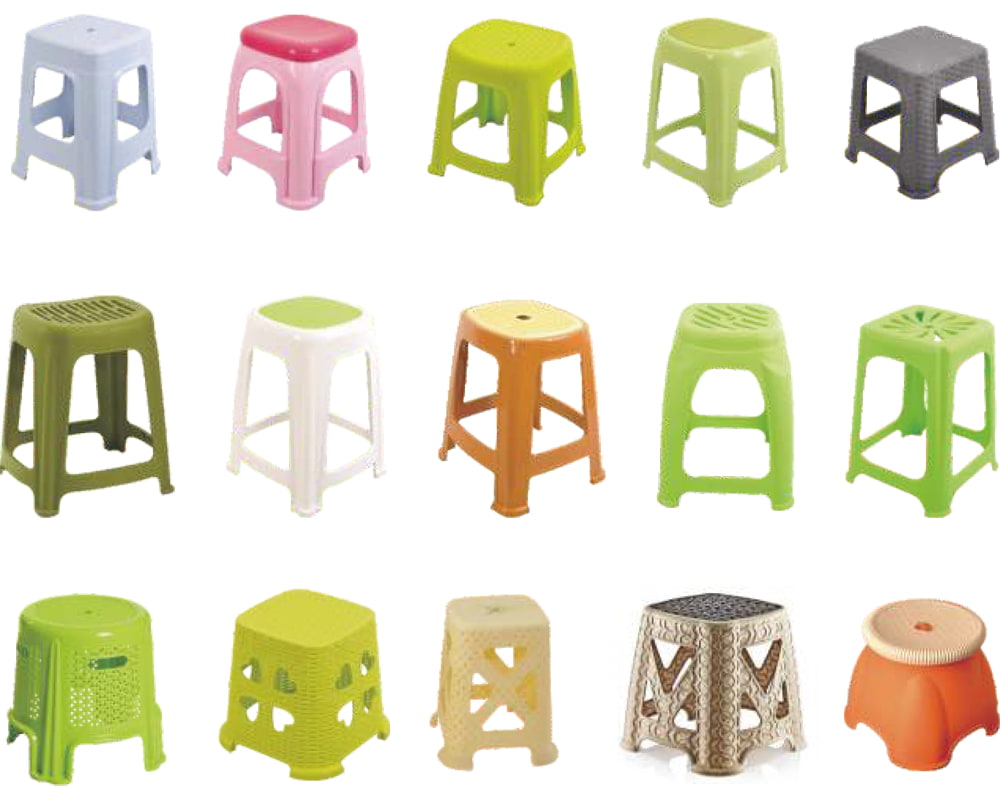


Stool moulds can be customized to create stools with different heights, shapes, or features to meet specific design requirements and user preferences. Customization allows for versatility in stool design and functionality. Here's how stool moulds can be tailored to create a variety of stool variations:
1. Adjustable Height Mechanism: Design the stool mould to accommodate an adjustable height mechanism, such as gas lift or telescopic legs, allowing users to change the stool's height to their desired level.
2. Multiple Mould Inserts: Create interchangeable mould inserts that can be swapped out to produce stools of varying shapes, sizes, or features. This allows for efficient production of different stool designs.
3. Stackable Design: Customize the mould to create stackable stools, which save space and provide practical storage solutions for both residential and commercial settings.
4. Different Seat Shapes: Modify the mould to produce stools with different seat shapes, such as round, square, or contoured seats, to cater to various ergonomic preferences and aesthetics.
5. Backrest and Armrest Options: Customize the mould to include backrests, armrests, or both, based on the desired stool design. These features enhance comfort and usability.
6. Footrest Integration: Design the mould to incorporate footrests at different heights to accommodate various seating positions and provide ergonomic support.
7. Material Variety: Customize the mould to work with different materials, such as wood, plastic, or metal, allowing for diverse stool designs and aesthetics.
8. Pattern and Texture: Integrate patterned or textured mould inserts to create stools with unique visual appeal and tactile sensations.
9. Custom Surface Finishes: Modify the mould to achieve specific surface finishes, such as glossy, matte, or textured, to match the desired stool appearance.
10. Integrated Storage: Design the stool mould to include hidden storage compartments beneath the seat or within the stool's structure.
11. Foldable or Collapsible Design: Customize the mould to create foldable or collapsible stools for easy storage and transport.
12. Specialized Use: Tailor the stool mould for specialized use, such as outdoor stools with weather-resistant features or bar stools with specific height requirements.
By customizing stool moulds, manufacturers can offer a diverse range of stool options that cater to various design preferences, functional requirements, and user needs. Customization enhances the versatility and marketability of the stools, making them suitable for a wide range of applications and settings.
The injection molding process for producing a plastic stool shares many similarities with producing other plastic products, but there are specific considerations and differences due to the unique design and functionality of a stool. Here's how the injection molding process may differ when producing a plastic stool compared to other plastic products:
1. Design Complexity: Stools often have more intricate designs, with various components like legs, seats, backrests, and armrests. The mould design must accommodate these multiple components, ensuring proper fit, alignment, and assembly during injection.
2. Material Selection: The choice of plastic material for a stool may differ from that of other products. Stools require materials with sufficient strength, durability, and load-bearing capacity to support users' weight.
3. Structural Integrity: Stools need to withstand mechanical stress and load distribution. The mould design and injection process must ensure the stool's structural integrity, preventing issues like warping, bending, or breakage.
4. Surface Finish: Stools often have exposed surfaces that require specific textures, patterns, or finishes for aesthetic and comfort reasons. The mould design must consider these surface treatments.
5. Ergonomic Considerations: Stools require careful attention to ergonomic factors, including seat contouring, backrest angles, and footrest positions. The mould design and injection process should ensure these ergonomic features are accurately replicated.
6. Assembly Integration: Some stool designs include multiple parts that need to be assembled after injection molding. The mould design should allow for precise alignment and assembly of these components.
7. Multi-Material Injection: Some stools may incorporate different materials or colors for various components, such as a plastic seat and metal legs. The injection mould may need to accommodate multi-material or multi-color injection processes.
8. Reinforcements: Stools might require added reinforcements, such as metal inserts or internal structural supports, to enhance load-bearing capacity. The mould design must allow for proper placement and securement of these reinforcements.
Despite these differences, the basic injection molding process steps—material melting, injection, cooling, demolding, and finishing—remain consistent. Manufacturers must carefully adapt their processes to meet the specific requirements and considerations of producing plastic stools to ensure high-quality and functional end products.
Taizhou Yubo Mould Industry Co., Ltd.
Excellent Stool mould Suppliers
We have a strong R&D team that can develop and produce products based on drawings or samples provided by our customers;
The team is experienced and the core team members have more than 10 years of professional work experience.
We have a perfect after-sales service system, which is completed by professional sales personnel and engineers.